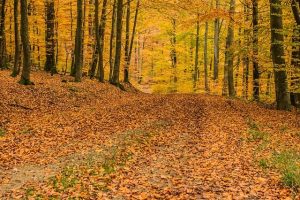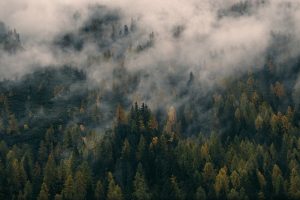Our Biome
A Biome is a major ecological community, extending over a large area and usually characterised by a dominant vegetation, such as forests. The Tree & Plant Life as well as the wildlife all adapt to the biomes atmosphere, which in turn adapts to the movements of the Earth. By the viewing of this movement we pull out our world view, adapting to the lands growth and returning what we take. Trees and Forests fall into one of four different Biome categories.
Deciduous Forest Biome
At first glance, the word deciduous can be a little bit confusing. Deciduous simply means falling off at a particular season. So, deciduous forest is a kind of biome where leaves fall off the trees when winter knocks.
Coniferous Forest Biome
A coniferous forest biome is chiefly made up of cone-bearing or coniferous trees, for example, pines, fir, hemlocks, spruces, cedars, cypresses, redwoods, yews, Douglass firs, larches, and kauris.
Temperate Rainforest Biome
A Temperate rainforest biome is a type of rainforest biome occurring in a temperate climate – vast amounts of rainfall, but cooler temperature compared to tropical rainforests.
Tropical Rainforest Biome
Tropical rainforest biome is an ecology or ecosystem composed of mainly vegetation community where the trees are closely spaced, and the crowns interact with each other to result in an unbroken canopy of plants.
A day in the Life of an Individual Tree
A tree’s root system works to absorb water and minerals from the soil, anchor the tree to the ground, and store food reserves for the winter. They also expand well beyond the dripline, often occupying an area two to four times the size of the tree crown, so when you are next to a tree you’re not under it, but you are still on it. It is made up of two kinds of roots: large perennial roots and smaller, short-lived feeder roots. It is the smaller roots/root hairs that gather the nutrients and water needed for the trees process of survival.
The trees trunk takes what is gathered from the roots to the crown, then what is gathered from photoshynthisis to the roots. The trunk is made up of several sections:
- The outer bark is the tree’s protection from the outside world. Continually renewed from within, it helps keep out moisture in the rain, and prevents the tree from losing moisture when the air is dry. It insulates against cold and heat and wards off insect enemies.
- The inner bark, or “phloem”, is pipeline through which food is passed to the rest of the tree. It lives for only a short time, then dies and turns to cork to become part of the protective outer bark.
- The cambium cell layer is the growing part of the trunk. It annually produces new bark and new wood in response to hormones that pass down through the phloem with food from the leaves. These hormones, called “auxins”, stimulate growth in cells. Auxins are produced by leaf buds at the ends of branches as soon as they start growing in spring.
- Sapwood is the tree’s pipeline for water moving up to the leaves. Sapwood is new wood. As newer rings of sapwood are laid down, inner cells lose their vitality and turn to heartwood.
- Heartwood is the central, supporting pillar of the tree. Although dead, it will not decay or lose strength while the outer layers are intact. A composite of hollow, needlelike cellulose fibers bound together by a chemical glue called lignin, it is in many ways as strong as steel. A piece 12″ long and 1″ by 2″ in cross section set vertically can support a weight of twenty tons!
The main function of a leaf is to produce food for the plant by photosynthesis. Chlorophyll, the substance that gives plants their characteristic green colour, absorbs light energy. Plants use more than one photosynthetic pigment to absorb light. This maximises the use of energy from the Sun. These pigments include:
- -Chlorophyll a
- -Chlorophyll b
- -Xanthophyll
- -Carotene
Chlorophyll a is the main pigment. It absorbs light mainly in the red and blue regions of the spectrum.
Chlorophyll b, xanthophyll and carotene are ‘accessory pigments’. They absorb light from other regions of the spectrum and pass the energy onto chlorophyll a.






